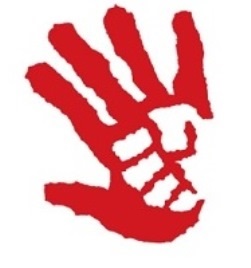Violence
 Globally there were an estimated 475 000 deaths in 2012 as a result of homicide. 60% of these were males aged 15–44 years, making homicide the third leading cause of death for males in this age group.
Globally there were an estimated 475 000 deaths in 2012 as a result of homicide. 60% of these were males aged 15–44 years, making homicide the third leading cause of death for males in this age group.
Within low- and middle-income countries, the estimated rates of homicide in the Eastern Mediterranean Region is 7.0 homicides per 100 000 population which is the third highest following the Region of the Americas, with 28.5 homicides per 100 000 population, and the African Region with a rate of 10.9 homicides per 100 000 population. While firearm homicides account for 47% of all homicides in the low- and middle-income countries of the Eastern Mediterranean Region, homicides by sharp force are estimated to comprise 26%.
Nevertheless, deaths are only a fraction of the health and social burden arising from violence. Women, children and elderly people bear the brunt of non-fatal physical, sexual and psychological abuse. Global estimates of intimate partner violence perpetrated by men against women indicate that in the African, Eastern Mediterranean and South-East Asia Regions, approximately 37% of ever-partnered women report experiencing physical and/or sexual violence by an intimate partner in their lives.
Caregiver support programmes are the most commonly reported strategy to prevent elder abuse. More than half of the countries in the Eastern Mediterranean Region (56%) indicated implementing caregiver support programmes on a larger scale.
Violence is commonly perceived as an issue for law and order, not for health. The role of the health sector is not seen beyond addressing the consequences related to health, particularly physical health, yet violence has become one of the leading public health issues of our time. It is defined by the intentional use of physical force or power, threatened or actual, against oneself, another person, or against a group or community, which either results in or has a high likelihood of resulting in injury, death, psychological harm, mal-development or deprivation. No country or community is untouched by violence. The Eastern Mediterranean Region is no exception. The Regional Office for the Eastern Mediterranean is following the guidelines and recommendations of the World Report on Violence and Health to implement programmes and draft strategies to address this menace in the Region and its countries.
Related links
Infographic: Global status report on violence prevention 2014
Information resources
Strengthening the medico-legal response to sexual violence, 2015
Preventing youth violence: an overview of the evidence, 2015
Toolkit on mapping legal, health and social services responses to child maltreatment, 2015
Health care for women subjected to intimate partner violence or sexual violence, 2014
Global status report on violence prevention 2014
Responding to intimate partner violence and sexual violence against women
Prevention of intimate partner violence and sexual violence, 2010 [pdf 1002Kb]
Statistics
Country profiles from the Global Status Report on Violence Prevention 2014


